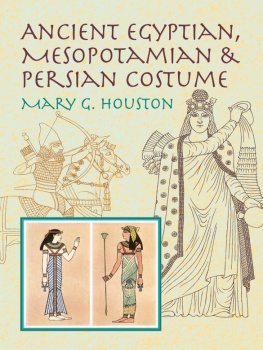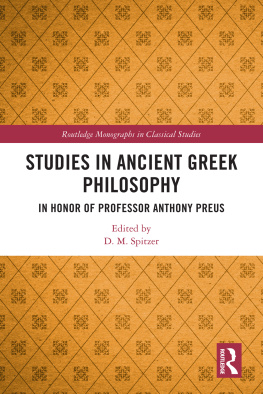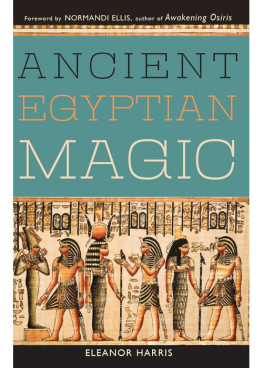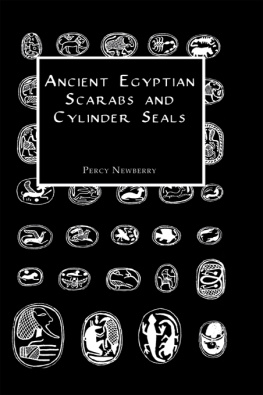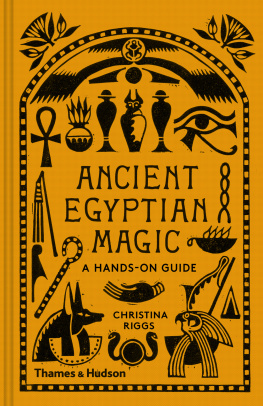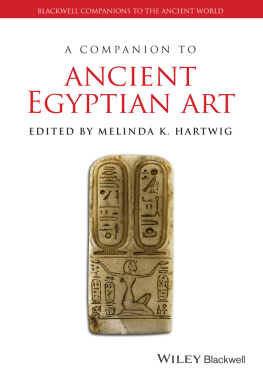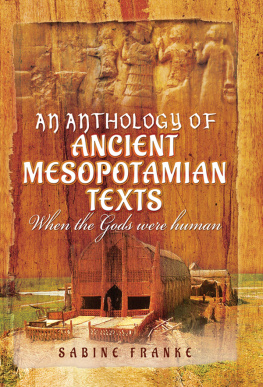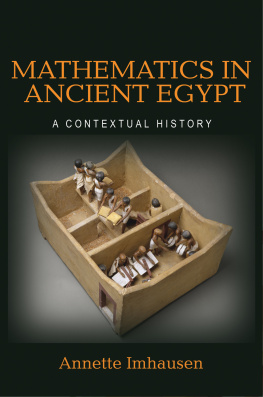Mary G. Houston - Ancient Egyptian, Mesopotamian & Persian Costume
Here you can read online Mary G. Houston - Ancient Egyptian, Mesopotamian & Persian Costume full text of the book (entire story) in english for free. Download pdf and epub, get meaning, cover and reviews about this ebook. year: 2012, publisher: Dover Publications, genre: Home and family. Description of the work, (preface) as well as reviews are available. Best literature library LitArk.com created for fans of good reading and offers a wide selection of genres:
Romance novel
Science fiction
Adventure
Detective
Science
History
Home and family
Prose
Art
Politics
Computer
Non-fiction
Religion
Business
Children
Humor
Choose a favorite category and find really read worthwhile books. Enjoy immersion in the world of imagination, feel the emotions of the characters or learn something new for yourself, make an fascinating discovery.
- Book:Ancient Egyptian, Mesopotamian & Persian Costume
- Author:
- Publisher:Dover Publications
- Genre:
- Year:2012
- Rating:4 / 5
- Favourites:Add to favourites
- Your mark:
- 80
- 1
- 2
- 3
- 4
- 5
Ancient Egyptian, Mesopotamian & Persian Costume: summary, description and annotation
We offer to read an annotation, description, summary or preface (depends on what the author of the book "Ancient Egyptian, Mesopotamian & Persian Costume" wrote himself). If you haven't found the necessary information about the book — write in the comments, we will try to find it.
Ancient Egyptian, Mesopotamian & Persian Costume — read online for free the complete book (whole text) full work
Below is the text of the book, divided by pages. System saving the place of the last page read, allows you to conveniently read the book "Ancient Egyptian, Mesopotamian & Persian Costume" online for free, without having to search again every time where you left off. Put a bookmark, and you can go to the page where you finished reading at any time.
Font size:
Interval:
Bookmark:

IN the case of those volumes published in the first half of the nineteenth century, consultation is usually only possible in a large reference library; but, on the other hand, the later authorities are much more accessible.
Brunton, W., Kings and Queens of Ancient Egypt , 1926.
Carter, H., The Tomb of Tut-Ankh-Amen, 1923, 1927 and 1933.
Champollion, J., Monuments de lgypte et de la Nubie, 1845.
Flinders-Petrie, Sir W., A History of Egypt , 1923.
Gardner-Wilkinson, Sir J., The Manners and Customs of the Ancient Egyptians, 1840, 1878 and 1890.
Garstang, J., The Hittite Empire , 1929.
Gosse, A., Civilisation in Ancient Egypt , 1915.
Hall, H., Ancient History of the Near East , 1913.
Heuzy, L. and J., Histoire du Costume dans lantiquitie classique , 1935.
Hottenroth, Le Costume 1883-1892.
Leemans, C., Aegyptische Monumenten , 183989.
Lepsius, C., Denkmaeler aus gypten und thiopien , 1849-59.
Maspero, G., Art in Egypt , 1921.
Perrol, G. and Chipiez, C., History of Ancient Egypt (trans. Armstrong, W.), 1883.
Prisse dAvennes, E., Histoire de lArt gyptien daprs les Monuments , 1860.
Racinet, Le Costume Historique , 1888.
Ranke, H., The Art of Ancient Egypt , 1936.
Rosellini, I., Monumenti dellEgitto e della Nubia, 1832-44.
Wallis-Budge, Sir E., The Gods of the Egyptians, 1904.
Weigall, A., The Glory of the Pharaohs , 1923.
British Museum Handbooks and Reproductions.
Cambridge Ancient History , 1923-24.
Encyclopaedia Brittanica , 14th Ed.
Metropolitan Museum of Art, New York, Picture Book , 1935.
Metropolitan Museum of Art, New York, Winlock, H., Treasure of El L  h
h  n , Vol. IV.
n , Vol. IV.
Muse du Caire, Vernier, E., Catalogue Gnral Antiquits gyptiennes, 1927.
Botta, M., Monuments de Ninive , 1849.
Childe, V., The Most Ancient East , 1929.
Conteneau, D., Civilization dAssur et de Babylone , 1937.
Delaporte, L., Mesopotamia , 1925.
Gadd, C., History and Monuments of Ur , 1929.
Hall, H., Ancient History of the Near East , 1913.
Herzfeld, E., Am Tor von Asien , 1920.
Heuzey, L., Costume dans Antiquit LOrient , 1935.
King, L., History of Sumer and Akkad , 1910.
Koldewey, R., Excavations at Babylon , 1914.
Layard, A., Monuments of Niniveh , 1849 and 1853.
Olmstead, A., History of Assyrian Art , 1923.
Pijoan, J., History of Art , 1926.
Place, V., Ninive et lAssyrie , 1867.
Rawlinson, G., Five Great Monarchies of Ancient World , 1871.
Rostoutzeff, M., A History of the Ancient World (trans. J. Duff), 1927.
Woolley, Sir L., The Sumerians, 1928.
Woolley, Sir L., Ur of the Chaldees , 1929.
Woolley, Sir L., Ur, Excavations, The Royal Cemetery , 1934.
Assyrian Sculptures in British Museum , Budge, E., 191438.
British Museum, Gadd, C., The Assyrian Sculptures , 1934.
British Museum, King, L., Bronze Reliefs from the Gates of Shalmaneser , 1915.
Cambridge Ancient History , 1923 and following.
Encyclopaedia Brittanica , 14th Ed.
Muse du Louvre, Conteneau, D., Catalogue des Antiquites Orientales, 1927.
Muse du Louvre, Heuzey, L., Catalogue des Antiquits Chaldennes , 1902.
Dieulafoy, La Perse, La Chalde et La Susane , 1887.
Flandin, E. and Coste, P., Voyage en Perse , 1843 and 1854.
Herzfeld, E., Archaealogical History of Iran , 1935.
Herzfeld, E., Iran in the Ancient East , 1941.
Huart, C., Ancient Persian and Iranian Civilization , 1927.
de Morgan, J., Mission Scientifique en Perse , 1897.
Perrot, G. and Chipiez, C., History of Art in Persia , 1892.
Pope, A., A Survey of Persian Art , 1938-39.
Postoutzeff, M., A History of the Ancient World (trans. J. Duff), 1927.
Cambridge Ancient History , 1923 and following.
Encyclopaedia Brittanica , 14th Ed.
THE very simple costumes of the Old Kingdom consisted of a kilt of varying lengths for men, and for women a tight-fitting tunic reaching from breast to ankles and kept in place by braces passing over each shoulder. Both sexes are occasionally seen wearing a cloak of thick material.
Among the most ancient representations of Egyptian costume which are known to us is that of the figure of the pre-dynastic King Narmer (3407 B.C.). In he is seen wearing the tall white crown of Upper Egypt (the Het ), also a plain corselet held in place by one brace, and a short plain kilt with a belt from which ornamental pendants hang down in front. Each pendant has at the top a representation of the goddess Hathors head, and this is shewn at the side of the figure to a larger scale. At the back of the belt is fastened the ceremonial animals tail which persists as a part of the kings of Egypt until the end of their history. On the chin of Narmer we see the ceremonial artificial beard of a king, which is fastened by straps to his crown. The figure of this king is taken from that very ancient fragment decorated with figures in relief and called The Palette of Narmer, a memorial tablet shewing the king in battle. The beards of gods, kings and noblemen were each different in shape, each symbolic of their wearers. This symbolism, so intricate in its character and so predominantly a feature of the dress of the Egyptian gods, is often transferred to the royal costumes ; hence we see a king in the dress of a god, and frequently both gods and goddesses are represented as wearing the crowns of Upper and Lower Egypt ( see Plate I).
In the present volume the costumes are considered mainly as being examples of period and silhouette, and also from the constructive or technical viewpoint; but in the bibliography appended on pp. 188 there are given the names of books dcaling specially with Ancient Egyptian symbolism, and perhaps one of the most informative in connection with this aspect of costume is The Gods of the Egyptians, by Sir E. A. Wallis Budge (1904), which has numerous plates in colour of the gods in their symbolic costumes. In Manners and Customs of the Ancient Egyptians by Sir J. Gardner Wilkinson (ed. 1878) there is also special information on symbolic costume.
.The Princess Sedet and Prince Nereb are shewn to be wearing the typical dress of persons of distinction at the period of the Old Kingdom, 4th Dynasty (2789 B.C.2715 B.C.). The figures are after Lepsius, who describes them as being from the Pyramid of Giseh. The tunic of the woman is red, her collar blue and white, her wig black and skin beige colour. The kilt of the man is white with the pleated part in gold, his wig is black and his skin is coloured reddish-brown. The early appearance of the characteristic ornamental-beaded collar in both figures is noteworthy, also the fact that wigs are worn even at this early period. The heads of the men were shaven or cut very close, probably for the sake of cleanliness and save in the case of persons of the lower social classes and the priesthood, wigs were worn. Among women, however, the custom of shaving the head was not universal. The hair was either allowed to grow or cut short, rather than shaved, though covered with a wig. At one period, indeed, during the 18th Dynasty, a fashion of shaving the heads of ladies does appear to have been the vogue for a short time. The well-known bust of Queen Nerfertiti and several other portraits shew shaven heads without wigs. The wigs of ladies of high rank were more elaborate and bulky than those of men, but with women mourners at funerals the natural hair, worn hanging simply down the back, was the rule.
Font size:
Interval:
Bookmark:
Similar books «Ancient Egyptian, Mesopotamian & Persian Costume»
Look at similar books to Ancient Egyptian, Mesopotamian & Persian Costume. We have selected literature similar in name and meaning in the hope of providing readers with more options to find new, interesting, not yet read works.
Discussion, reviews of the book Ancient Egyptian, Mesopotamian & Persian Costume and just readers' own opinions. Leave your comments, write what you think about the work, its meaning or the main characters. Specify what exactly you liked and what you didn't like, and why you think so.

